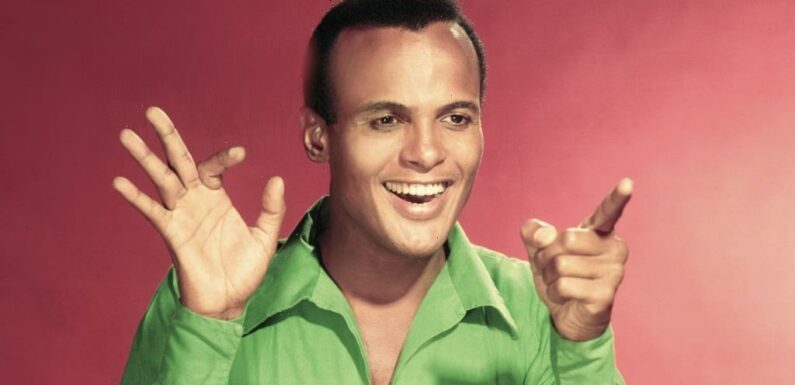
After arriving late to the launch party for actress Sheryl Lee Ralph’s 2001 Jamaican Film and Music Festival, I nervously stepped out of the elevator and into one of those fancy New York parties, hoping to see someone I recognized. And I did: In front of me was Harry Belafonte, flashing his dazzling, movie-star smile. Upon noticing me there on my own, he chivalrously took a step back and extended his arm. I slid mine through his and, with the entire place watching (Yay, me!), the handsome star escorted me down a clear, spiral staircase and into the ballroom. Then he kissed me on both cheeks and exited.
To this day, I have no idea if Belafonte recognized me from a week earlier, when he stopped by the Sirius studios. I had recorded the King of Calypso as he read liners for the channels that play his music — classics including 1956’s “Day-O (The Banana Boat Song),” 1957’s “Island in the Sun” and 1961’s “Jump in the Line (Shake, Senora).” Before he left, he indulged me by reading one last liner in his authentic Jamaican accent, which he rarely uses in public.
Though Harlem-born, Belafonte was raised in his parents’ native Kingston. Both my parents are Jamaican, born and raised. My father would play Belafonte’s music on a record player as he got me ready for pre-K class. This is among my earliest memories, and I realize now I was ignited musically, and infinitely connected to his music. I feel privileged to have witnessed two distinct sides of Harry Belafonte: the refined gentleman who was the first Black sex symbol, and the down-to-earth man of his people.
Belafonte is also one of the first Black multi-hyphenates; after finding fame as a trailblazing singer and songwriter (his 1956 album “Calypso” was the first to sell a million records in pop music history), he ventured into acting and human-rights activism. In paving a path for future musical activists, he worked not with just the obvious Black ones of the civil rights era (he was a close confidant of Martin Luther King Jr.), but also the white ones who would come to define rock ‘and’n’ roll activism in the 1980s: Bob Geldof, Bono, Sting and Bruce Springsteen. (The latter was in the room when USA for Africa’s all-star chorus broke out into the “Day-O” refrain as a tribute to organizer Belafonte during the “We Are the World” recording session.)
Then there are Belafonte’s later acting performances, in movies like Robert Altman’s “Kansas City” and Spike Lee’s “BlacKkKlansman,” in which he is almost musical in delivery, a breathtaking culmination of his two titanic artistic sides.
For all those reasons and more, Belafonte is not only deserving of induction into the Rock and Roll Hall of Fame as an early influence, but the Rock Hall itself is elevated by his inclusion. Congratulations, Mr. Belafonte! In my best island patois, I salute you: “Whatating!”
Pat McKay is an air personality with SiriusXM the Joint. This essay is part of a series — in partnership with the on-air talent of SiriusXM — to pay tribute to the performers being inducted into the Rock and Roll Hall of Fame on Nov. 5 in Los Angeles. Catch the complete Rock and Roll Hall of Fame 2022 Induction Ceremony on HBO on November 19, at 8 p.m. ET, along with a simulcast on SiriusXM’s Rock and Roll Hall of Fame Radio (ch. 310) and on Volume on the SXM App. SiriusXM listeners can also catch live, backstage coverage and commentary from the ceremony on Volume on the SXM App, along with recaps on “Feedback” on Faction Talk (ch. 103) beginning Monday, Nov. 7.
Read More About:
Source: Read Full Article